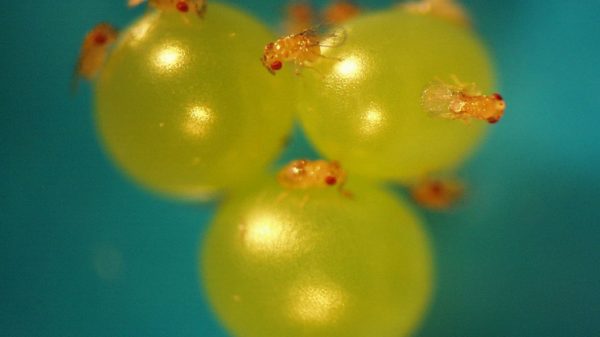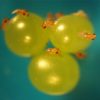Jurassic remains found in China give scientists new clues about the origins of amazing creatures
Prehistoric fossils show that the ancestors of the Jurassic «underwater vampires» actually fed on flesh rather than were bloodsuckers. Living jawless fish, especially lampreys, have become a well-studied group of animals for evolutionary biologists and ecologists, and are even considered a model for research in the field of vertebrate evolutionary biology.

This is due to the fact that jawless fish can potentially retain information about the origin of important organs — the jaw bones of vertebrates and paired fins (like the limbs of terrestrial vertebrates) and have a significant impact on modern fishing, writes the Chinese edition of the Global Times.
Nicknamed the «underwater vampire» and the inspiration for monsters in thriller films, the lamprey has a «terrifying mouth and feeding behavior.» It also has a three-stage life cycle, similar to the transformation from a tadpole to a frog. As a result of metamorphosis, lamprey larvae develop into adults with significant differences in morphology and ecology, including fundamental changes in feeding behavior.
The discovery of large lamprey fossils from the «Yanliao Biota» (for reference: a biota is a historical collection of species of living organisms united by a common habitat in past geological eras or in the present), a treasure trove of Jurassic fossils in China, provides important clues to answer questions about how the modern lamprey evolved to have this unique feeding behavior, and what impact this had on the evolutionary history of lampreys.
The Global Times learned from the Institute of Vertebrate Paleontology and Paleoanthropology of the Chinese Academy of Sciences.< /p>
The fossils were collected by Wang Xiaolin and Wang Min, both researchers at the institute. Institute researchers Wu Feixiang and Zhang Chi collaborated with Professor Philippe Janvier of France's National Museum of Natural History on the study, which was published in Nature Communications online on Wednesday.
Lampreys have no hard bones in their bodies, and their teeth are made of keratin, making them difficult to preserve as fossils. However, lamprey fossils found in the Yanliao biota not only remain intact, but most importantly, their suckers and teeth are preserved in almost three-dimensional form, providing rare and valuable specimens for understanding the evolution of lamprey feeding behavior.
The new materials include two lamprey species: Yanliaomyzon occisor (Yanliao killer lamprey) and Yanliaomyzon ingensdentes (Yanliao giant toothed lamprey). The Yanliao killer lamprey measures more than 64 centimeters in length, making it the largest known fossil lamprey. Most Paleozoic lampreys are only a few centimeters long, and the largest are about 10 centimeters, which is even smaller than the size of the larvae of modern lampreys near metamorphosis. Larger-sized lampreys have been reported in the Cretaceous Jehol biota, but no material has been found with a body length greater than that of the Yanliao killer lamprey.
The tooth structure of the Yanliao lamprey is very different from modern Northern Hemisphere common lampreys such as the sea lamprey (Petromyzon marinus), but has many similarities with the marsupial lamprey (Geotria australis), which is now found in Australia, New Zealand and southern Chile in the southern hemisphere.
Their sucker teeth and teeth used for cutting meat are also very similar, indicating that these Jurassic lampreys, like the sac lamprey, were typical carnivorous lampreys. The presence of bone fragments in the digestive tract of Yanliao lamprey fossils also supports this.
The results of the analysis indicate that the Yanliao lamprey is the closest fossil ancestor of modern lampreys known to date.
The feeding habits of modern lampreys are very diverse. Blood-sucking species such as the sea lamprey are the best known, while few species are carnivorous. There are also species that feed on carrion or do not feed after metamorphosis. Different eating habits correspond to different dental characteristics.
It was previously believed that the ancestor of the modern lamprey was a blood-sucking species similar to the sea lamprey. However, research analysis and reconstruction of the ancestral state of the Yanliao fossils showed that the ancestor of the modern lamprey was most likely a carnivorous species.
According to the chronological tree and the researchers' findings, since the Jurassic period, the lamprey's feeding system and ecological habits were close to such as in modern lampreys. But there have been changes in the food sources for lampreys.
It has been suggested that, beginning in the early Jurassic period, more evolved bony fish with thin scales arose in large numbers and became an abundant food source, leading to an increase in their body size and energy requirements.
Today, almost 90 percent species of lampreys live in the northern hemisphere, and blood-sucking lampreys in the northern hemisphere are considered representatives of a more primitive lineage. Therefore, it is generally accepted that modern lampreys originated in the northern hemisphere.
However, recent research suggests another explanation — based on reconstruction of the tree of time, modern lampreys may have originated in the southern hemisphere at the end of the Cretaceous period (about 78 million years ago) due to limitations in Jurassic lampreys. During the Early Neogene period (approximately 58 million years ago), northern and southern lampreys diverged, and after the late Miocene, northern hemisphere species spread from the North Pacific to the North Atlantic.
The divergence occurred later than previous studies had suggested, which means the lamprey's «living fossils» may not be as old as thought, writes the Global Times.
























































Свежие комментарии